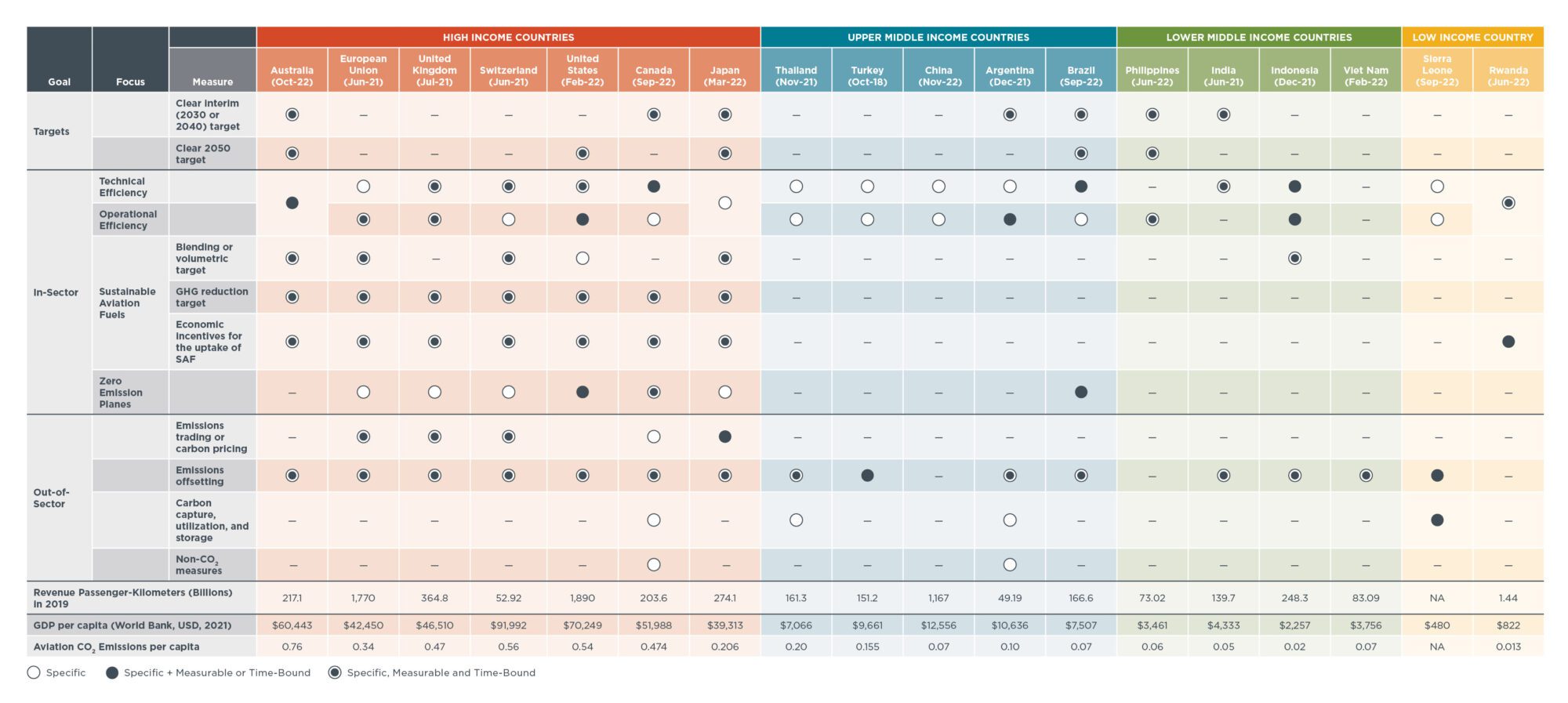Briefing
Towards Net-Zero Aviation State Action Plans
The International Civil Aviation Organization (ICAO) has adopted a long-term aspirational goal (LTAG) to decarbonize aviation. Under the agreement, governments pledge to achieve net-zero carbon dioxide (CO2) emissions by 2050. The agreement requests that countries submit a State Action Plan (SAP) detailing measures to reduce aviation emissions consistent with the 2050 net-zero target by June 2024; 143 SAPs have been submitted as of October 2023.
SAPs are voluntary planning and reporting tools that countries use to inform ICAO regarding aviation emissions reduction strategies and outline any environmental or economic impacts of those reductions. SAPs cover plans for aircraft purchases, new airports, fuels, and offsetting measures like the CORSIA initiative or carbon capture and storage to achieve the net-zero goal. SAPs have been a primary tool for countries to report to the ICAO on their current aviation-related emissions and aviation industry prospective developments.

Caption: Survey of SAPs.
Countries have submitted SAPs to the ICAO since 2013, but the new international agreement raises the stakes for action by member countries. Indeed, as countries begin to prepare new SAPs to support the LTAG agreement, member countries could benefit from clearer guidance from the ICAO on what information they should include in their SAPs. However, providing clearer guidance will be challenging; because the agreement does not assign emission reduction goals to individual countries or their carriers or set interim targets to demonstrate progress by 2030, for example.
This briefing clarifies how SAPs can be improved to help achieve CO2 emission reduction goals. Specifically, we identify information that is missing in current SAPs and highlight areas that could be clarified to help determine if SAPs present viable net-zero pathways.
